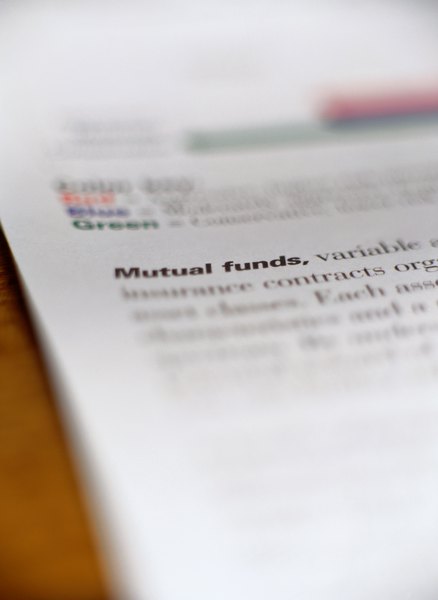What Is a 30-Day Yield on a Mutual Fund?
The 30-day yield is an SEC-mandated calculation.
Stockbyte/Stockbyte/Getty Images
When you look up the specifics of a bond mutual fund, you will find several different reported yields, where yield represents a measure of the fund's income return. Each type of yield is useful, but the 30-day Securities and Exchange Commission (SEC) yield rule requires every fund to calculate this particular yield number the same way.
Even though the 30-day yield doesn't represent the actual yield of a mutual fund, it provides investors with a projected estimate of earnings. This calculation is based on the current market value on the date of the calculation with a look backward to the fund's actual, recent 30-day history.
Tip
A mutual fund's 30-day yield follows a standardized calculation that levels the playing field for equitably evaluating the projected performance of mutual funds.
SEC-Mandated Yield
The 30-day yield reported by a mutual fund uses a yield calculation formula mandated by the SEC. The purpose of the 30-day yield requirement is to provide a uniform result that investors can use to compare the expected yields of different funds. This yield amount is the income the fund would pay over the next year if no changes were made to the fund's portfolio holdings.
30-Day Calculation
The 30-day yield is calculated by taking the fund's interest and/or dividend earnings for the most recent month and dividing by the average number of shares outstanding for the month times the highest share offer price on the last day of the month. The resulting monthly interest rate is compounded semi-annually for a 12-month yield. In effect, the calculation uses the most recent month's tally of net interest earnings and projects those earnings out for the next 12 months.
30-Day Yield Formula
The 30-day yield formula is: 2 x (((a - b) / (c x d) + 1) ^ 6 - 1), where interest and dividends received over the last 30-day period are represented by "a;" accrued expenses over the last 30-day period, less reimbursements, are represented by "b;" the average number of outstanding shares on a daily basis, which were entitled to receive distributions are represented by "c" and the maximum price per share on the day of calculation, which is also the last day of the calculating period is represented by "d."
Exploring Distribution Yields
Mutual funds also usually report a distribution yield. The yield may be based on either the most recent fund dividend amount -- usually monthly for bond funds -- or the total distributions per share for the last year. It either case, the dividends are annualized and divided into the end-of-month share price. The distribution yield is a backward-looking calculation based on historic dividends paid by the fund.
Evaluating a Fund
The 30-day SEC yield and the distribution yield of a mutual fund may show significantly different numbers. The 30-day yield is the conservative estimate of what an investor should earn over the next 12 months. Neither yield takes into account the effect of changing share prices on the total return. Besides looking at the reported yield numbers, an investor should look up the actual dividend history to see if the distribution rate has been increasing, decreasing or staying consistent.
References
Writer Bio
Tim Plaehn has been writing financial, investment and trading articles and blogs since 2007. His work has appeared online at Seeking Alpha, Marketwatch.com and various other websites. Plaehn has a bachelor's degree in mathematics from the U.S. Air Force Academy.

